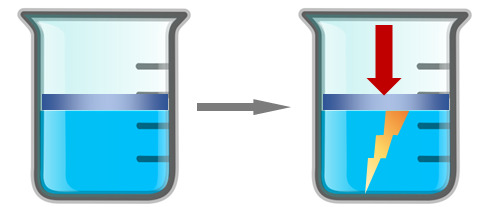“Ask the expert” articles provide information and insights from MSU scientists, researchers and scholars about national and global issues, complex research and general-interest subjects based on their areas of academic expertise and study. They may feature historical information, background, research findings or offer tips.
The piezoelectric effect was first discovered in 1880 and is used in applications ranging from spark sources for stoves and gas furnaces to the accelerometers in mobile phones for orientation and in automobiles to deploy airbags.
While this effect has been known for a long time in solid materials, Gary Blanchard, a professor of chemistry in Michigan State University’s College of Natural Science, and his graduate student, Md. Iqbal Hossain, were able to see the piezoelectric effect in a liquid for the first time — a finding that opens possibilities for new applications.
What is the piezoelectric effect?
The piezoelectric effect is the ability of certain materials to generate an electric charge when a mechanical stress is applied to it such as squeezing, pressing or pushing. Also, you can apply a charge to the material and cause a change in its shape. There are many practical applications of this phenomenon in everyday household, industrial and scientific uses.

This graphic shows how applying pressure to an ionic liquid produced an electrical charge or the piezoelectric effect on a liquid. Credit: Gary Blanchard
The observation of the piezoelectric effect in a liquid is important because there are applications that are much better suited to using a liquid than a solid. From a fundamental perspective, the current model of the piezoelectric effect in solids appears to be inconsistent with the effect observed in liquids. Understanding why the piezoelectric effect occurs in ionic liquids (room temperature molten salts) will provide insight into the unusual properties of ionic liquids and point the way toward purpose-driven design of piezoelectric liquids.
What could this discovery mean for the future and new applications?
Other applications include energy harvesting like solar or wind power that can be stored for later use and tactile sensing of pressure such as someone’s grip strength. This discovery is likely to spur the development of new applications in which the properties of a liquid can be used as an advantage.